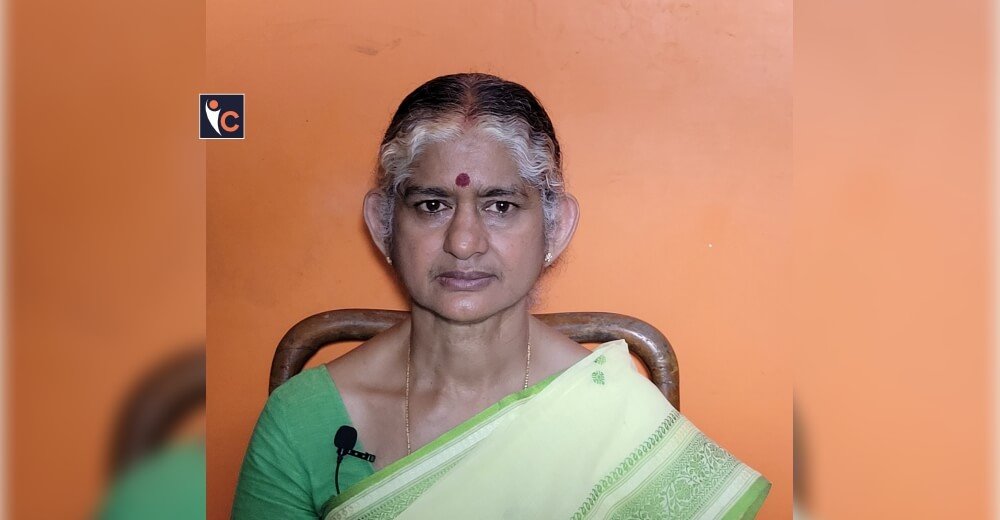In the pharmaceutical sector, bioanalytical services play a critical role in helping to determine the safety and effectiveness of potential medications. Altasciences is a prominent leader in this field, renowned for its innovative methods and commitment to excellence.
Dr. Lynne Le Sauteur, with over 25 years in the industry, leads Altasciences’ laboratory sciences which focuses on preclinical and clinical bioanalysis. Her extensive background, from establishing immunology departments to leading laboratory sciences in multiple areas, including ligand binding assays, mass spectrometry, molecular biology, flow cytometry, immunogenicity, and cell-based assays, reflects a deep-rooted dedication to advancing bioanalytical practices.
Altasciences fosters a culture of innovation and collaboration, driving a strategic approach to early-phase drug development that unites bioanalysis with preclinical and clinical research, as well as drug formulation and manufacturing. Dr. Le Sauteur’s leadership echoes this mindset of innovation and collaboration, positioning Altasciences as a leader in providing top-tier bioanalytical services.
Let’s delve into how Altasciences emerges as a pivotal player in the biotechnology and pharmaceutical industry’s bioanalytical services sector, driven by Dr. Le Sauteur’s steadfast commitment to excellence, collaboration, and advancement!
Can you share with our readers a brief overview of your professional journey in the field of drug development and bioanalysis, leading up to your role at Altasciences?
There are many potential paths that one could take in life sciences; and luckily, I was exposed to several of them during my training, which helped me to identify what I liked best and where I could have a positive impact. My time as a CO-OP student during my bachelor’s degree allowed me to work in different types of laboratories and helped to inform my career path. My doctoral and postdoctoral experiences furthered my interest in applied drug development and the regulatory environment, solidifying my choice to join the drug development world.
I have since built a career in drug development that spans over 25 years. This journey includes establishing the Immunology Department at another contract research organization (CRO) at a time when the regulatory guidance for immunotoxicity and immunogenicity testing was just getting started. After 13 years in that role, I had an opportunity to join the Human Health Therapeutics Research Centre at the National Research Council of Canada (NRC), focusing on R&D, characterization, and manufacturing of biologics; and led numerous teams and initiatives to discover, biomanufacture, and characterize novel biologics for unmet needs, in collaboration with numerous biopharmaceutical companies. After six years at the NRC, I was drawn back to the CRO space, specifically to Altasciences because its vision and potential for impact were unparalleled.
Since 2019, I’ve been the Vice President of Laboratory Sciences at Altasciences, where I lead a team of over 260 specialists at our three laboratory facilities in Canada and the U.S.
Brief our readers about Altasciences and the founding principles that drive it as an integrated drug development solution company.
At Altasciences, our mission is to provide sponsors with simple, integrated, outsourcing solutions that remove the need for multiple providers during the early stages of drug development. Whether for one study or an entire program, we help our clients reach critical decision-making milestones sooner by simplifying and accelerating their journey from lead candidate selection to clinical proof of concept, and beyond. As such, we offer preclinical safety testing, clinical research, bioanalysis, drug formulation and manufacturing, as well as the full array of complementary research services, such as medical writing, clinical monitoring, protocol development, and PK/PD analysis. All are available as standalone services, or as part of an integrated package—we give sponsors complete flexibility. Sponsors who choose a suite of services can benefit from integrated research activities and teams, centralized program management and scheduling, and so much more.
At Altasciences, we treat drug development as a single continuum. Whereas, traditionally, sponsors would have to contract different CROs and CDMOs to complete different aspects or phases of their research and development. The type of integration we have built allows for our scientific and operational teams from across phases and departments to move as one unified team on a sponsor’s project, leveraging data and insight from each other to plan the client’s roadmap and anticipate and proactively address potential roadblocks. This approach eliminates communication gaps between various development stages and ensures rapid and seamless transitions from one milestone to the next.
Could you highlight some of the key innovations and unique approaches that set Altasciences apart in the competitive landscape of bioanalytical services?
What sets Altasciences apart from other bioanalytical service companies and CROs is that we are a truly integrated service partner for drug development—from discovery to the clinic—with the option to integrate bioanalysis with other Altasciences solutions for a full-service package. Because Altasciences has both preclinical and clinical facilities, and substantial expertise, we can effectively bridge these phases of drug development, and bridge the gap between laboratory testing and real-world drug development. The advantage for bioanalysis is that we can leverage know-how, assays, and information efficiently throughout drug development, from scientific, regulatory, and operational perspectives. In addition, our bioanalytical services can also be contracted as a standalone solution, independent of any other Altasciences preclinical or clinical study.
Could you tell us more about Altasciences’ bioanalytical capabilities and solution offerings?
Our bioanalytical capabilities support discovery to Phase IV drug development, and we have three laboratories: one in Laval, Québec, (15 minutes away from our clinical unit in Montréal, Québec), and two co-housed laboratories at our preclinical facilities in Seattle, Washington, and Columbia, Missouri, to ensure timely collection, processing, transport, and rapid analysis of our clients’ samples for expedited decision-making.
We listen to understand sponsors’ needs, create innovative solutions to difficult problems, and communicate with scientists as scientists ourselves. We help biotechnology and pharmaceutical companies develop robust bioanalytical portfolios to enable appropriate drug development decision-making based on pharmacokinetic and pharmacodynamic data; in other words, providing critical data to understand what the body does to the drug and what the drug does to the body.
How does Altasciences actively contribute to advancing the industry’s standards and practices in drug development?
To remain at the forefront of scientific, regulatory, and operational excellence, and continue to push industry standards, my team assesses new technologies and determines if and how they can be used to improve any aspect of preclinical or clinical bioanalysis. From a regulatory perspective, keeping abreast of existing and new developments in drug modalities is crucial. With many novel types of molecules in development, such as cell and gene therapy products, there are ongoing discussions and recommendations with regard to how to conduct appropriate bioanalysis.
Our experts also publish scientific articles and actively participate in industry conferences by hosting sessions, presentations, and scientific posters during which we share our findings and knowledge.
Our bioanalytical expertise has contributed to numerous drug development filings which have contributed to successful drugs now on the market. Three recent examples include support of therapeutic antibody bioanalysis during COVID-19, contributions to white papers on bioanalysis for gene therapy, and driving advancements for the use of microsampling for sample collection.
What leadership principles have you found most effective in promoting innovation and collaboration within your team?
As a leader, I am always driving for change, innovation, and improvements, and I find that the best way to attain these results is by focusing on and enabling teamwork. I actively involve my team in decision-making and put my team first. I also ensure that my team members are excelling in roles that suit their strengths and are working effectively with others who have complementary skills.
What are some of the challenges that you have encountered in the advancing field of bioanalysis, and how have you navigated these challenges to maintain the company’s position as a leader in the industry?
A challenge specific to the bioanalytical work that we do is the implementation of emerging instrumentation and technologies while ensuring the foundation of bioanalysis is exceptional. To ensure we are at the forefront of requirements, we have dedicated teams within Laboratory Sciences at Altasciences that focus on equipment and advancements in innovation, as well as dedicated compliance teams. These teams, in collaboration with all Laboratory Sciences departments, ensure that we have a strong foundation and that we can move effectively into emerging technologies. Our continual focus is on scientific and regulatory requirements to establish the right method, for the right purpose, at the right time in an efficient manner. This requires exceptional driving documents, continuous training, and harmonization between sites.
How do you ensure a cohesive and efficient workflow among the diverse assessments your team conducts for large and small molecules, oligonucleotides, and gene therapy?
Each project or program is assigned a project or program manager who becomes the main point of contact for clients throughout their journey with us to improve speed and efficiency. The project/program manager is responsible for active timeline management and centralized scheduling. As much as they are liaisons with clients, they also work closely with the study team on the client’s behalf to produce timely answers to client questions and proactive updates, identify key performance indicators, review emerging data against the drug development strategy, and prepare summary reports. In short, they ensure our clients benefit from a seamless, single-team experience. Ask Albert—our proprietary database of client information—is a crucial tool for the project and program managers in bolstering communication and cohesive and efficient workflows among our different departments. Ask Albert collects key client and project information and makes it readily available to Altasciences team members—regardless of research phase, location, or department.
Could you share some of the success stories or case studies that illustrate Altasciences’ commitment to delivering value and success for its clients?
One important success story that comes to mind is the bioanalysis support we provided for Bamlanivimab, a neutralizing monoclonal antibody developed by Eli Lilly that was designed to block attachment of SARS-CoV-2 to the spike glycoprotein, thereby preventing entry into human cells. Using a hybrid LC-MS/MS approach to evaluate the quantitation of Bamlanivimab in clinical samples, we were able to provide critical data needed to meet precision and accuracy requirements for quantitation of more than 40,000 samples in an efficient and timely manner.
Are there any milestones or goals that the company aims to reach in terms of timelines, efficiency, or advancements in bioanalytical services?
When it comes to bioanalysis in our field, the regulatory environment and scientific considerations make integrating automation especially complex—which is something we are continuously working on for optimal efficiency. There are many ways we can integrate automation into our processes, ranging from one step of an assay to full automation of an assay or platform to utility improvements of specific software.
What advice would you offer to aspiring professionals in the field of biologic drug development and bioanalysis, based on your own experiences and the journey of Altasciences under your leadership?
I would strongly recommend they consider, at some point in their life sciences career, joining a CRO—especially for those beginning their careers. Working at a CRO, you’ll be exposed to a wide range of projects, clients, and therapeutic areas, allowing you to gain diverse experience. You’ll have the opportunity to work with cutting-edge technologies and methodologies, enhancing your skill set. The fast-paced environment of CROs can accelerate your learning and development in various parts of drug development, such as preclinical research, clinical trials, and regulatory affairs—this will open you to so many opportunities and boost your career growth. Furthermore, the fast-paced environment will encourage you to work efficiently and develop strong time management skills. It can also prepare you to handle high-pressure situations and tight deadlines, which are common in the life sciences industry.
To summarize, joining a CRO can take you in wonderful directions in your career, and help you develop the various skills you’ll need. In addition, in any healthcare sector, networking is critical, so be brave and optimistic, and persevere.










